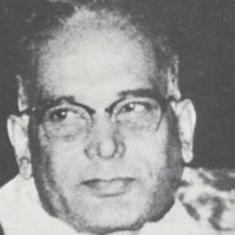In 2014, Nico Rosberg won one out of the final eight races as Lewis Hamilton swept his way to the world championship. In 2015, the German won three of the final eight races, but all of them came by only after his Mercedes teammate had won a second successive drivers’ title (third overall).
It is no secret that the championship battle(s) heat up only after the summer break, and, starting from the Belgian Grand Prix, the second half of any Formula 1 calendar year is an unusually tight schedule. This 2016 season is especially cramped, with nine races in about 12 weeks, two of which have gone past in a jiffy already. The big difference this time around is that Rosberg has started off with back-to-back victories immediately after the break, winning in Spa and Monza over the last two weekends.
Hamilton took his pending engine penalties in Spa, and in lieu of the 55-place grid penalty, got three fresh power units for the remainder of the season. That he managed to finish third after starting 21st on the grid was a good drive, thus managing the championship lead to nine points, down from 19 at the start of that race. Then he showed up in Monza, all charged up and made a pertinent point in qualifying, stomping to pole with a 0.478s gap to Rosberg’s P2.
Rosberg’s tenacity
It was a stunning show on a power-hungry circuit, a lap quick enough to deflate the opposition, his teammate and only rival for the championship in this particular case. To Rosberg’s credit though, when Hamilton’s clutch did not give way for a smooth start on Sunday, he made the race count and drove flawlessly to victory.
This has been the hallmark of the German’s driving in 2016. He has looked mentally upbeat, not giving any quarter to his teammate, even forcing clashes on-track. Rosberg has been aggressive and is refusing to back out of this title fight. These last words could be considered a mild understatement since the 19-point deficit is now down to only two points, and the momentum squarely rests with him going ahead.
Meanwhile, for two successive race weekends, mechanical issues have hampered Hamilton. The engine change was imperative and timed properly to a limit, but the clutch problem compounded matters. On a six-corner circuit, he could only muster a recovery drive to second position and never troubled Rosberg.
Yes, Mercedes have had issues with their starting procedure, and both drivers have been affected at different points. But with the stakes high, and the margin of error very small, would the team want to explain another such error in the future to either of its drivers?
Jenson Button’s peculiar agreement
This will be the key discussion in the Mercedes’ garage in the fortnight leading up to the Singapore Grand Prix, which takes place on September 18. Elsewhere, down the paddock, where championships and titles do not concern other teams for yet another year, the talk will have shifted to silly season after two high-profile announcements during the Italian GP weekend. Williams’ Felipe Massa announced his retirement from F1 at the end of this season, while Jenson Button too took a step back from his racing duties at McLaren.
The latter has a peculiar agreement in place for the next two seasons. While his racing seat will be taken up by highly rated youngster Stoffel Vandoorne, Button could yet come back and drive for McLaren in 2018, should Fernando Alonso opt not to renew his contract, which ends next season. The Spaniard has said time and again that the current set of rules do not ignite enough passion in him. The next year, thus, could be the last straw, especially if Honda’s struggles continue and his hopes of a third title subside further.
Button, like Mika Hakkinen in 2001, is taking a sabbatical of sorts wherein he will kowtow to the demands of the sponsors and bring in money as a former British world champion, whilst also being a stand-by driver in case of an emergency. This stitches up McLaren’s plans for the mid-term future. But, what of other teams, especially in the short term?
Who will replace Massa?
The vacancy at Williams could spark off a chain reaction down the paddock with quite a few drivers moving seats. Despite a Mercedes engine, the erstwhile champion outfit is stagnating in terms of aerodynamic development and need extra funds to challenge for podiums once again. It is but a given that they will go for a sponsored driver, and they have two available options. The first is Canadian Lance Stroll, who is doing well in Formula 3, and fits in well with the youngster-approach that is the current flavour in F1.
The other option is Sergio Perez, who has so far not acknowledged a contract extension with Force India. The Mexican has got two podium finishes this year (Monaco and Baku), and is on the lookout for a move, but he has been linked more with Renault. If Perez does not go, the Enstone-outfit might consider Frenchman Esteban Ocon, who was their reserve driver until he replaced Rio Haryanto at Manor Racing after the summer break.
It appears that Perez’s move will be the key to the driver market. If he moves, it will leave an opening at Force India, and their engine supplier Mercedes may want Pascal Wehrlein (who has been impressive at Manor) to take up that seat. It will then leave the door open for new talent to step in next year at the two vacant seats at Manor.
Amidst all this, there is one seat that is expected to see sure-shot change. Daniil Kvyat’s time on the grid seems almost up, with rumours surfacing in Italy that he could be replaced in time for the Singapore GP. From Red Bull to Toro Rosso to out of reckoning within six months is a hard fall, and representative of the cutthroat environment of Formula One.










